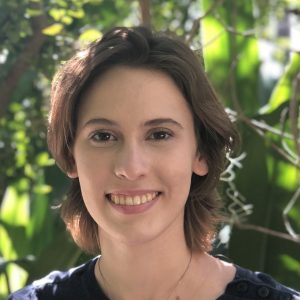
On February 3-5, 2019, AAM’s Historic Houses and Sites and Environment and Climate networks hosted a rare convening of experts at Vizcaya Museum and Gardens in Miami, Florida, for “Sustainability: Governance, Relevance, and the Environment.” This two-day summit focused on the topic of sustainability for historic sites, both in financial health and in facing the impact of climate-related changes. Two scholarships were provided to emerging museum professionals thanks to the generosity of Rowman & Littlefield and DEMHIST, International Committee for Historic House Museums. We asked the recipients to share their reflections and takeaways from the summit; here we hear from undergraduate student and aspiring museum professional Sarah Ortiz-Monasterio.
Tell us a little about yourself.
I am currently a senior at the University of Miami, pursuing a double major in English Literature and Art History and a minor in Classics. I serve as the president of the university’s Sigma Tau Delta International English Honor Society Phi Mu Chapter, an organization committed to fostering interest in English Language and Literature. My experience interning at the Philadelphia Museum of Art in the summer of 2018 fostered my continued appreciation for museums, and made me more knowledgeable regarding the maintenance and impact of historic homes, including Mount Pleasant and Cedar Grove. My interest in museum development has encouraged me to pursue a graduate degree in a discipline that will enable me to further my studies in art history, as well as pursue a career in museum administration.
How did you initially learn about this summit? What aspects of the program piqued your interest the most and why?
I initially learned about this summit through an instructor of mine at the University of Miami, Dr. Nathan Timpano. Dr. Timpano received the information from a fellow colleague of his at the university, Dr. Elizabeth Shannon, who also serves as Vizcaya’s Curator of the Contemporary Arts Program and Special Projects. The aspects of the summit that most piqued my interest included the theme, “Sustainability: Governance, Relevance, and the Environment.” This title suggested the summit would advance my knowledge of how historic home leaders maintain the integrity of their institutions while simultaneously affirming their continued educational relevance. Moreover, as I am familiar with Vizcaya Museum and Gardens and impressed by the museum’s ability to appeal to a broad audience by strategically engaging visitors in the museum’s history, I was enthused by the opportunity to hear how this mission has been brought to fruition.
What were three key takeaways?
Three key takeaways include:
- Maintaining open dialogue with colleagues is both critical and useful. It is apparent that productive communication is vital to worthwhile collaboration and exchange. Discussing strategic initiatives enables staff members to work together to realize both individual and shared goals.
- Articulating a succinct and effective institutional mission statement is of paramount importance. From my experience at the summit, I recognize that a compelling mission statement affords patrons an understanding of the driving principles of a particular institution.
- There are distinctive ways through which historic homes and their caretakers participate in environmental sustainability. The unique nature of historic home sustainability encourages historic home leaders to adopt and develop innovative sustainability approaches, which reflects the idea that doing what one is able to do and capable of executing is a distinctive effort.
What was your favorite session or speaker, and why?
My favorite session was the Conservation Lab because it enabled me to become more knowledgeable about conservation endeavors at Vizcaya, specifically how conservators take essential precautions when preparing the house and gardens for potentially destructive weather, including hurricanes. Moreover, the session not only elucidated how Vizcaya’s team embarks upon recovery protocol in the aftermath of damaging weather events, but also how they maintain the integrity of the house and gardens throughout the year on a routine basis. I enjoyed this session because it demonstrated how preparedness and conservation are entities that are in flux, as the means through which they are carried out are subject to change and progress. And, while this session was particularly relevant to Vizcaya, many of its guidelines regarding house and garden maintenance may be applied to other historic homes and institutions.
What was the most valuable part of the summit?
Attending the summit informed me of what tangible challenges historic home leaders confront and how these individuals work both independently and collaboratively to achieve their objectives. I am now more aware of how cultural institutions, specifically historic homes, are managing and embracing their evolving relationship with their respective milieus, and continuing to discover new ways to keep their legacy relevant to their communities and comprehensible to their patrons. The seminar structure of the summit enabled presenters to propose beneficial and constructive ideas, which in turn allowed participants to learn about avenues that may be pursued and capitalized on within their own institutions.
How do you plan to use the knowledge you gained in your daily work and/or research?
As I look forward to my graduate studies and planned career in museum administration, I will actively keep in mind that art and cultural history and business operations work in tandem. The summit has informed me of what strategies and approaches are required and recommended to be employed when working toward attaining a goal, both individually and when a part of a team. The tools that are utilized in carrying out historic home ventures may likewise be applied toward conducting and evaluating research. These skills are important to bear in mind when discussing cultural institution relevancy and posterity, and how it is imperative to continue to work together to accomplish goals.
Skip over related stories to continue reading article








Comments